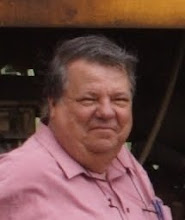Since my last post way back on 2 February this year there
has been little to no progress on the model railway in The Shed. During the
past months I have been harassed by Scooter and others to do an update for my
Blog. I even have a friend in Houston, Texas looking forward to my next post.
My time has been taken up with work, an operation where I had to have 3 weeks sick leave and not allowed to do anything strenuous for 10 weeks. During the past 8 months I have been working on a book with three good friends and today I think there is light at the end of the tunnel. I have finished selecting all the images and writing the captions (I hope) and the book layout is currently being done.
We are carefully reviewing each few pages of the manuscript as the layout is completed making any final adjustments before it is sent off to the printer. The book is the story of the Hudswell Clarke steam locomotives purchased by the Colonial Sugar Refining Company for use in Fiji and Queensland. It follows on from a book we wrote back in 1982 about the last ten years of Hudswell Clarkes on the Herbert River near Ingham and because this year is the 100th birthday of the HOMEBUSH preserved in working order at the Victoria Mill in Ingham by Wilmar Sugar, the Singapore owners of the CSR Company.
HOMEBUSH is 100 years old this year.
The book is due to be launched in Ingham on Saturday 11 October, an event which I will be attending.
With the book now almost out of the way it is time for Raymond and I to turn our attention back to our On30 layout in The Shed.
We have been wanting to make a start on some scenery for quiet some time now but needed some MDF to make the backscenes. Accordingly this week an orde3r was placed with Mr Ply & Wood at Underwood for 21 lengths of 3 mm MDF 2400 mm X 400 mm. I also ordered what I hope will be the last delivery of plywood we will need – 4 sheets of 12 mm 2400 X 1200 mm.
The ply is required to cut out the track baseboard for the helix that will enable us to get from the top level to the lower level. The delivery is quick and painless. MDF costs only $10 per 2400 X 1200 sheet and the ply $30 plus $30 delivery. The delivery charge is certainly a lot different to that charged by that bulky DIY warehouse which is around $110/delivery. I had ordered 8 sheets of 2400 X 1200 MDF with 7 sheets to be cut to the 2400 X 400 size. Again, unlike that other place, there was no charge for cutting to size.
Hopefully, in the next couple of weeks, Raymond and I will start fitting the MDF as there will be a little bit of notching to be done to accommodate the framework. Once we work that out we will have to paint each a sky blue colour and start mapping in clouds, mountains etc before affixing the sheets to the layout framework.





















